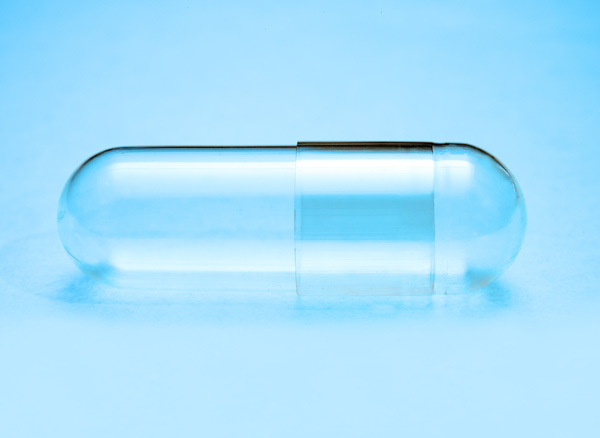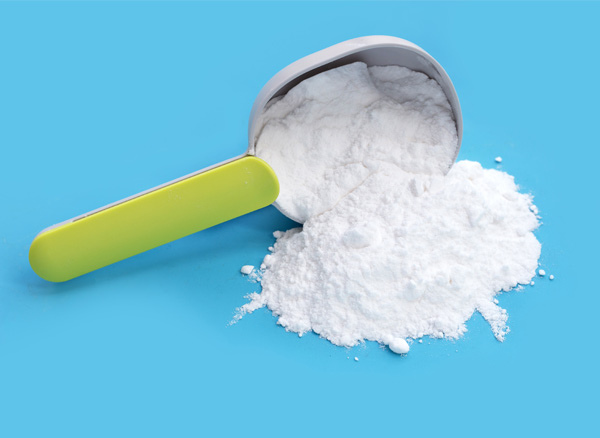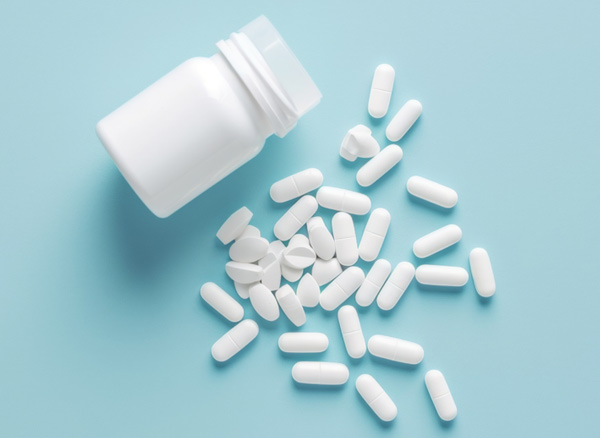Are Hidden Ingredients in Pills Making You Sicker? Excipients — every ingredient in a medication that isn't the active drug — can cause severe MCAS reactions in some people
 S even years ago, when my daughter’s health was precipitously declining, we found out she was allergic to microcrystalline cellulose (MCC)–one of the most common fillers in medications and supplements. It turned out that everything we’d been doing to try to help her was in fact sabotaging her recovery.
S even years ago, when my daughter’s health was precipitously declining, we found out she was allergic to microcrystalline cellulose (MCC)–one of the most common fillers in medications and supplements. It turned out that everything we’d been doing to try to help her was in fact sabotaging her recovery.
Just two months prior to that discovery, she had been diagnosed with mast cell activation syndrome (MCAS). This followed a lengthy illness and treatment for Lyme, Ehrlichia and Bartonella. Despite treatment, her health continued to deteriorate. It was the most terrifying time of her illness. Come to find out, reactions to medications are very common in patients with MCAS.
However, according to Dr. Lawrence Afrin, a specialist in hematology and mast cell disease, it’s not usually the medications themselves that are the problem. Instead, MCAS patients are more likely to react to one or more of the “inactive” ingredients — the fillers, binders, dyes, or preservatives in their medications — known as excipients. (Only a handful of medications — as opposed to their excipients — are known to trigger mast cells. These include some antibiotics and all SSRI anti-depressants.) At the time, I’d never even heard of excipients in medications, let alone MCC.
What Are Excipients?
Every ingredient in a medication that isn’t the active drug itself is labeled as an “excipient.” Ideally, excipients are inert and have no pharmacological effect. But there have been growing reports of adverse reactions to these extra ingredients.
Excipients can range anywhere from simple organic ingredients (like corn starch or sugar) to more complex substances with potential for toxicity at higher doses or after prolonged use (like dextran or polyethylene glycol.)
Here’s how we figured out my daughter was allergic to MCC.
In the Fall of 2016, she had developed sensitivities to multiple chemicals and could eat only two foods without having an allergic reaction.
Thankfully, one of her doctors thought to question what fillers were being used in one of her medications — ketotifen, a mast cell stabilizer. I called the pharmacy and was told the prescription contained two ingredients: ketotifen and lactose. That hit me like a ton of bricks. She’d been lactose-intolerant for years! I felt angry and relieved all at once. Had we found the missing piece of the puzzle?
Later that day, her doctor called in the prescription for ketotifen with the request to use ascorbic acid (Vitamin C) as the filler. After picking up the new prescription, out of caution, I only gave her a half dose — and she had an allergic reaction. What was going on? Long story short, the pharmacy screwed up and used MCC instead.
That day, I emailed Dr. Afrin, who had assisted me in finding a MCAS doctor in California. He replied:
“Yes, I’ve seen microcrystalline cellulose (MCC) act as a trigger in *some* mast cell patients. Sometimes it’s any type of MCC, and sometimes it’s specific to the type of plant from which the cellulose has been sourced. For example, some MCAS patients are sensitive to cotton-derived MCC but not wood-derived MCC, whereas others are sensitive to wood-derived MCC but not cotton-derived MCC. (And there are plenty of other potential types of plant sources for MCC, too.)”
I was not happy. But at least we had determined that she had a problem with MCC—something we hadn’t even thought about before. I quickly went to the cupboard and discovered that every single one of her vitamins and supplements contained MCC. Without realizing it, we had been undermining our own efforts the entire time!
Steps for Discovery
At that point, we’d just assembled a team of doctors who were very knowledgeable about MCAS. Under the guidance of this care team, we switched to a PCAB-certified custom compounding pharmacy with experience in MCAS patients. (PCAB is the Pharmacy Compounding Accreditation Board. Compounding pharmacies tailor the medication to a patient’s personalized needs. They can add or subtract ingredients as the prescribing doctor specifies.)
Here are steps we took to rule out any further allergies to her medications:
 We had the pharmacy send us samples of two types of empty pill capsules. Hard capsules come in either vegetarian or gel capsules. Because the vegetarian capsules are made with cellulose, we opted to try the gel capsule first and she was fine. (Note: gel caps are made from animal products. So, if you have alpha-gal syndrome or are allergic to meat, stay with the vegetarian options.)
We had the pharmacy send us samples of two types of empty pill capsules. Hard capsules come in either vegetarian or gel capsules. Because the vegetarian capsules are made with cellulose, we opted to try the gel capsule first and she was fine. (Note: gel caps are made from animal products. So, if you have alpha-gal syndrome or are allergic to meat, stay with the vegetarian options.)
 We had the pharmacy send three gel caps with three different types of fillers that are considered mast cell stabilizers or histamine reducers: ascorbic acid (Vit C), sodium bicarbonate (baking soda), and mango powder. (Other filler options included rice powder, ginger root powder and acidophilus.)
We had the pharmacy send three gel caps with three different types of fillers that are considered mast cell stabilizers or histamine reducers: ascorbic acid (Vit C), sodium bicarbonate (baking soda), and mango powder. (Other filler options included rice powder, ginger root powder and acidophilus.)
 Once we determined she was okay with ascorbic acid in the gel cap, we had the pharmacy custom compound her medications accordingly.
Once we determined she was okay with ascorbic acid in the gel cap, we had the pharmacy custom compound her medications accordingly.
That is how we have done all her prescription medications and supplements since — and it has worked well for us.
Alternate Discovery Method
Another way to determine what you’re reacting to is to enlist the aid of your pharmacist. Unlike over-the-counter medications, where the FDA requires every ingredient to be on the label, excipients are not listed on prescription medications.
Because of this, you must ask the pharmacist to do an internet search to discover all the ingredients and excipients in the medication you had an adverse reaction to.
Next you will need them to make a list of everything in a medication that you are okay with. From there, you will need to compare the differences between them and try to determine what gave you the adverse reaction.
One thing to keep in mind is that excipients can vary between brand name and generic medications. So, if you are taking a brand name medication and then switch to the generic, you may be able to quickly determine the culprit.
And just because you are okay with one generic brand doesn’t mean you will tolerate the next one. Generic manufacturers are allowed to change formulations, whereas the patented name brand medication must remain consistent.
What Is the Role of Excipients?
 Excipients are derived from either organic or inorganic chemicals and have different purposes. Primarily, they are used to enhance the manufacturing and proper absorption of a medication. Currently, there are nearly 14,000 different excipients listed on the FDA’s Inactive Ingredient Data Base.
Excipients are derived from either organic or inorganic chemicals and have different purposes. Primarily, they are used to enhance the manufacturing and proper absorption of a medication. Currently, there are nearly 14,000 different excipients listed on the FDA’s Inactive Ingredient Data Base.
In general, medications that are formed into hard tablets have more excipients than those in capsules. Because the active ingredient is often measured in micrograms (think grains of salt), the medication will be diluted along with a filler, so it can be more easily packaged and administered. In some pills, up to 90% of the volume can be excipients.
The following excipients have also been reported to cause adverse reactions:
- annatto (yellow food dye, derived from achiote tree)
- aspartame (artificial sweetener)
- benzoates & benzyl alcohol (derived from tar oil)
- carmine (natural red #4, derived from dried insects)
- casein, lactitol & lactose (derived from dairy)
- cellulose (corn, cotton, various trees, wheat)
- oleic acid (fatty acid derived from animal or vegetable fats)
- propylene glycol (product of ethylene oxide gas)
- sulfites (used as a preservative)
- saccharin (artificial sweetener)
- soya lecithin (derived from soy)
- sorbitan trioleate (derived from sorbitol)
- tartrazine (FD&C yellow #5, synthetic)
Bottom line, if you’re having frequent reactions to medications while being treated for Lyme disease, don’t always assume it’s a Herxheimer reaction. You may be reacting to one or more of the hidden ingredients in your medications.
References:
- Pharmacological treatment options for mast cell activation disease. https://www.ncbi.nlm.nih.gov/pmc/articles/PMC4903110/pdf/210_2016_Article_1247.pdf
- US FDA: Inactive Ingredient Search for Approved Drug Products. https://www.accessdata.fda.gov/scripts/cder/iig/index.cfm
- Evaluating Quality in a Compounding Pharmacy. https://www.koshlandpharm.com/wp-content/uploads/2018/11/Evaluating-Quality-in-a-Compounding-Pharmacy.pdf
- US FDA: Frequently Asked Questions. https://www.fda.gov/Drugs/InformationOnDrugs/ucm080123.htm
- See how USP ensures safety, identity and quality of excipients in drug, food and dietary supplement formulations. http://www.usp.org/excipients
Editor’s note: Any medical information included is based on a personal experience. For questions or concerns regarding health, please consult a doctor or medical professional.





























